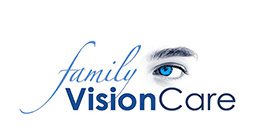 More than 40% of North Americans have myopia (nearsightedness), most of them since childhood.
More than 40% of North Americans have myopia (nearsightedness), most of them since childhood.
Myopia (nearsightedness) occurs when the eyeball grows too long, and the shape of the eye causes light rays to focus in front of the retina instead of directly on the retina. This causes distant objects to appear blurry.
Children with moderate to severe myopia are at significant risk of developing sight-threatening eye diseases such as macular degeneration, cataracts, retinal detachment and glaucoma later in life.
Is the myopia epidemic even partly due to children spending too much time looking at digital screens? While digital devices keep our children entertained and help them learn via online classrooms, it's important to understand the ramifications associated with using them.
Is There a Link Between Digital Screens and Myopia?
That’s an excellent question, with no easy answers.
Several studies have found that children who spend many hours indoors doing “close work” — reading, writing, and looking at computers and other digital devices — have a higher rate of myopia progression.
In Denmark, teenagers who spent more than six hours a day on screens doubled their risk of myopia, while in Ireland, researchers determined that spending more than three hours a day on a screen increased the chances a child would be myopic.
However, some other studies haven’t found a definitive correlation between screen time and myopia.
What is clear is that children who spend a considerable amount of time playing outdoors in the sunshine appear to develop myopia at a slower rate than children who spend almost all their time indoors.
A study published in the American Academy of Ophthalmology’s professional journal, Ophthalmology, found that the progression of myopia in first-graders who spent at least 11 hours per week playing outside in the sunshine was slower in the “sunshine” children.
And a study by the Singapore Eye Research Institute found that each hour teenagers spent outdoors doing activities lowered their risk of myopia by 10 percent.
Whether this was due to them looking at far-away objects or to sunlight’s effect on the children’s eyes requires further study.
What is certain: Children, teens and adults who look at screens for an extended period of time often experience blurred vision, headaches, dry eyes and digital eye strain.
Signs of Myopia
Looking at objects too closely
If you notice your child moving closer to the TV, or having trouble seeing the board in their classroom, it can be a sign that they have myopia.
Head tilting or squinting
If your child tilts or squints their head while watching TV, it may be a sign that they are having trouble focusing.
Blurred vision
If your child can’t see clearly in the distance or complains of blurry vision, it may be due to using a digital screen for long periods of time.
Headaches
Untreated myopia can cause serious eye strain, which can cause headaches.
How to Help Prevent Myopia or Slow Its Progression
Many cases of myopia are inherited, but it’s still possible to slow and sometimes halt its progression. Here is what you can do to help prevent your child from developing this eye condition:
- Encourage your child to go outdoors at least 90 minutes a day, preferably in the sunshine. Be sure to follow local health recommendations regarding children and exposure to sunlight, including wearing UV-protected sunglasses and sunscreen.
- Limit the amount of time your child spends doing close work such as homework, reading and staring at a screen.
- When your child uses a digital screen, make sure the screen isn’t close to their face. Encourage your child to take a break at least once every 20 minutes, and to look across the room for at least 20 seconds during each break.
- Discuss myopia management with your eye doctor to help slow and potentially stop the progression of your child’s myopia.
How We Can Help Treat Myopia
If your child shows signs or symptoms of myopia, schedule an eye exam with your eye doctor as soon as possible to discuss a myopia management plan. Early diagnosis of myopia or other eye conditions can improve your child’s performance in school, on the sports field, and can help prevent serious sight-robbing eye diseases later in life.
Contact Family Vision Care to schedule an appointment to discuss your child’s myopia management plan.
Q&A
Q: What is Myopia Management?
- A: Myopia management is a treatment program prescribed by your eye doctor to slow, and sometimes halt, myopia progression.
Q: What is involved in myopia management?
A: Depending on the severity of myopia and age of your child, your eye doctor may prescribe any of the following myopia management techniques:
- Eyeglasses, such as bifocal or multifocal
- Multifocal contact lenses
- Atropine eye drops
- Orthokeratology (Ortho-k) contact lenses
{
"@context": "https://schema.org",
"@type": "FAQPage",
"mainEntity": [{
"@type": "Question",
"name": "What is Myopia Management?",
"acceptedAnswer": {
"@type": "Answer",
"text": "Myopia management is a treatment program prescribed by your eye doctor to slow, and sometimes halt, myopia progression."
}
},{
"@type": "Question",
"name": "What is involved in myopia management?",
"acceptedAnswer": {
"@type": "Answer",
"text": "Depending on the severity of myopia and age of your child, your eye doctor may prescribe any of the following myopia management techniques:
Eyeglasses, such as bifocal or multifocal
Multifocal contact lenses
Atropine eye drops
Orthokeratology (Ortho-k) contact lenses"
}
}
]
}
